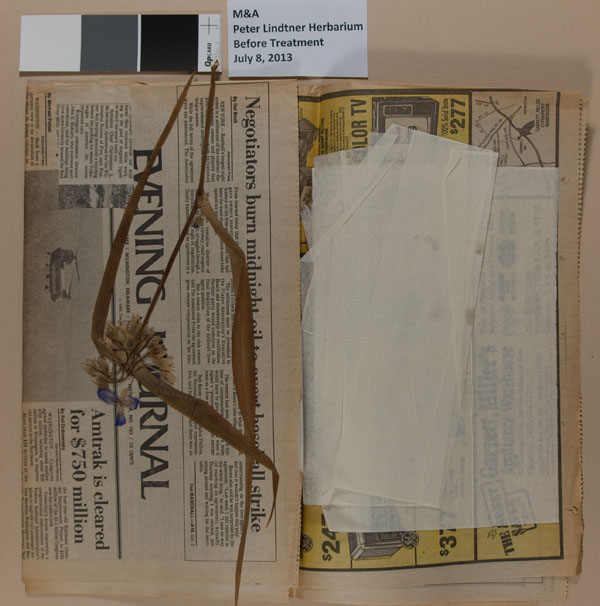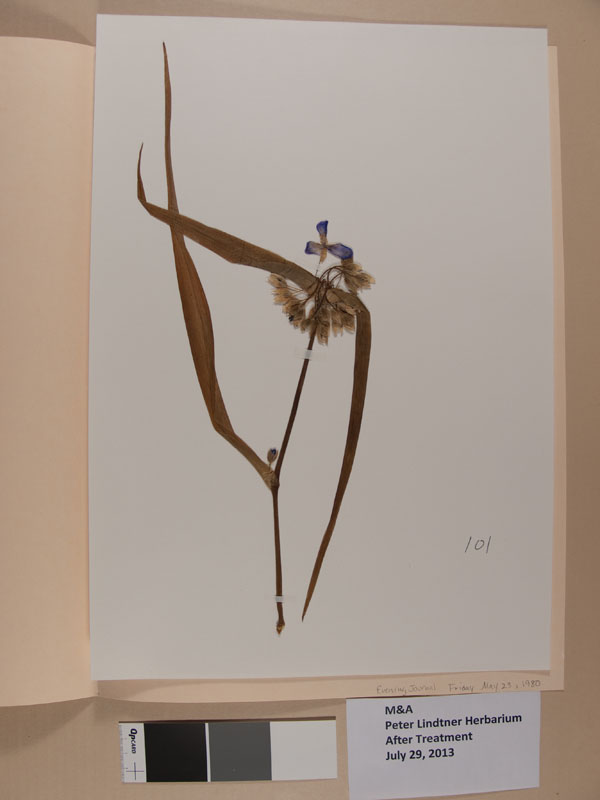I have probably said this before, but you really never know what you might find in an archive. Of course we have rows and rows of ledgers, rolled architectural plans, and manuscript papers, but we also have a collection of dried plants from the grounds of Hagley, collected by former Hagley horticulturalist Peter Lindtner. This herbarium, created sometime between the 1980s and 1990s, is part of the Hagley Foundation Archives, which maintains the records of our institutional operations.
I am neither a botanist, nor a conservator specializing in natural history collections, so the methods in which plant specimens are used and preserved is slightly mysterious. I have observed some of the specimens at natural history institutions and noticed that the older specimens appear to have more notations and labels on the mount. The specimens I have seen are important documents of a particular variety of plant, and are used for scientific study. The herbarium at Hagley is more of a document of the types of plants growing here at a particular time. They appear to be mostly wild flowers, like bluebells, columbine, and trillium. These varieties are still prominent in our landscape today.

There are a few things dried plants have in common with the paper based collections I am primarily responsible for: they are made of cellulose and lignin; they can be exceedingly brittle; thin areas like leaves and blossoms can become weak when wet; and they can harbor mold.
The most notable feature of herbarium specimens is the physical alteration of the plants that happens with the pressing process. The way that a plant is arranged prior to pressing has a direct relation to what features are visible in the flattened form. Pressing and drying completely changes the color and the form of the plant, although some things do resist alteration, like thick woody stems bulky seeds pods. For these items we made sink mats using acid free corrugated board to build up the housing around the perimeter of thicker specimens in order to prevent uneven pressure through the stack of mounted plants.
This group of plants was generally in good condition, except for some detached flowers and stems, especially those on fine thin stalks. Many of these collected plants had not been mounted, but they were still very neatly pressed between sheets of newspaper. (It was interesting to revisit the news from the 1980s!) The unmounted items are also unidentified plants, therefore they are not being arranged and stored in a typical herbaria organizing structure (grouped by species>genus>family).

The mounted specimens had been attached to mount boards using thin strips of brown paper tapes. Some of the adhesives on the tapes had become brittle and the plants were at risk of falling off the boards completely. In some cases a plant had shifted and it was possible to see its original position by the location of light brown staining on the mount. There were also some minor dry inactive residues of mold or pollen. This we cleaned by delicately wiping with vulcanized rubber sponges (a product originally manufactured for removing soot from wallpaper). We removed all loose tapes and replaced them with an acid and lignin-free paper tape with an acrylic adhesive that is removable when moistened with water. All of the unmounted specimens were also mounted using small strips of this tape, strategically placed to support all leaves, stems, buds, and flowers. Fine tweezers and a bone-folder were essential tools for this project. An acid-free unbuffered mounting board, produced for herbaria, was selected. Each mounted specimen was then housed in a folder and grouped in custom herbaria boxes.
The digitization of herbaria at some natural history institutions has allowed instantaneous access for researchers. This reduces the likelihood of damage or loss to the specimens. I was also interested to learn that some institutions still maintain loan programs for their plant specimens. The Peter Lindtner collection (in its physical form) is available in the Manuscripts and Archives department at Hagley.
Laura Wahl is the Library Conservator at Hagley.
